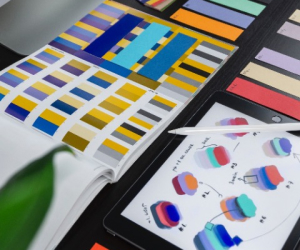Have you ever wondered why color psychology in marketing is important? According to an interesting infographic by Homestead,
93% of customers buy a product just based on its visual appeal, with 84.7% stating that color is the main element that appeals to them and
influences their buying decision. A whopping 80% also believe that color can make or break the brand image. With statistics such as this,
color psychology is essential in marketing. Strand360 explains how the different colors are perceived by customers and how you can choose
the right one for your brand.
What is color psychology
Color psychology is a study that analyses how different colors affect human behavior. In marketing, this relates to how different colors and
tones can have an impact on the customer buying behavior and decision-making. This is very important as different colors in branding, logo and
other visual elements can influence a customer’s perception of the business.
How to make practical decisions about color in your marketing and branding
When choosing the right color for your brand and marketing elements, you have to begin by understanding how different colors are perceived
by customers. Once you know how the different colors work, you can correlate them to the traits your business wants to portray and choose a
color accordingly. Read on to see why some of the biggest global brands chose the colors they did:
Red
The color red creates a sense of urgency that can be harnessed to push sales. It is also known to create an appetite, making it effective in
the fast-food sector. The major brands that use red include Coca-Cola, Kellogg’s, Netflix, Canon, etc.
Orange
The color orange invokes a feeling of warmth, brightness and comfort. It can also be associated with autumn, giving the brand a more
‘earthy’ feel. Brands that have incorporated orange in their brand identity include Nickelodeon, TNT, Mozilla Firefox and Hermes Paris.
Yellow
Yellow stands for happiness, sunshine, optimism and warmth. It is known to have a strong visual presence, especially when used in
conjunction with a contrasting or darker color. Big brands that use yellow are Shell, McDonald’s, IMDB, Nikon and CAT.
Green
A color that is synonymous with nature and health, green has always had a strong primitive relationship with humans. Companies that use
green include Whole Foods, Animal Planet, Starbucks, Android and more.
Finding your own palette
Now that you know how the major colors are perceived in the minds of customers, it is time to find your own palette. Follow these simple
steps to choose a color that truly represents your business and its core values:
-
Brand image: Choose a color that can wholly represent your brand image. If you want to portray a sense of power and
authority, red is the way to go. If you want to remain gender-neutral, steer away from stereotypes such as pink and blue for specific
genders.
-
Pick two colors: Keep it simple when choosing your brand colors. Customers have better recall when you use one or two
main colors rather than more. However, you can still use darker colors for type or highlights.
For more information on color psychology in marketing and how you can build a strong brand image through color, contact
Strand360 today.

_1752x1168a.jpg)
_1638x1092a.jpg)


.jpg)

.jpg)
.jpg)
.jpg)
